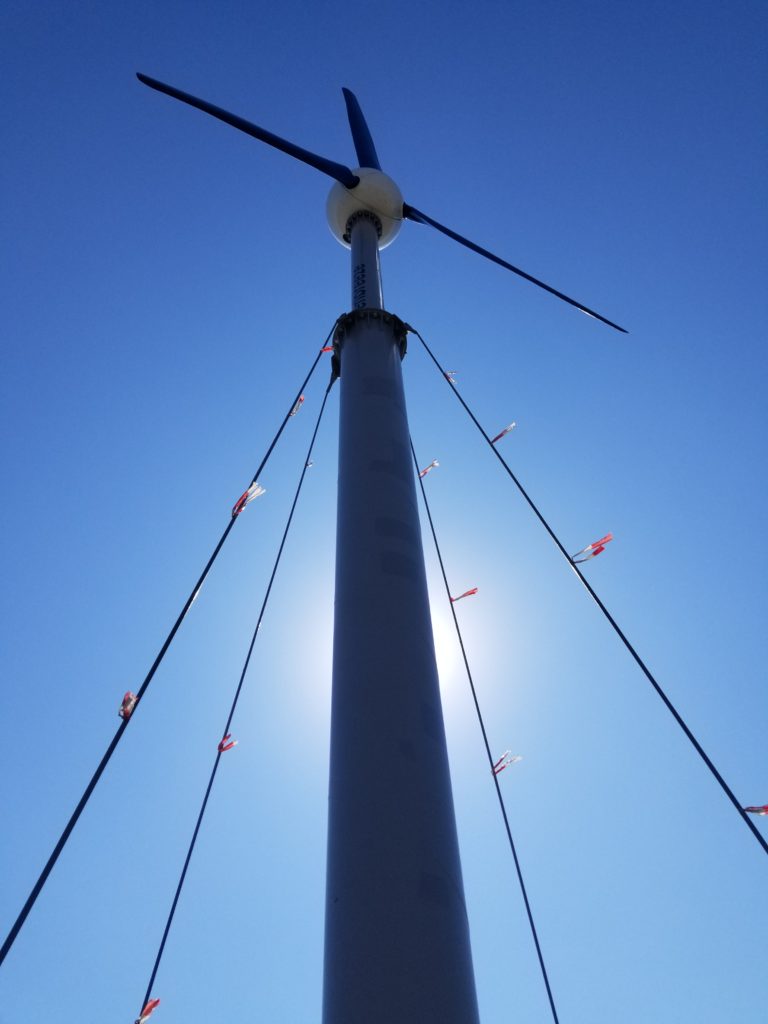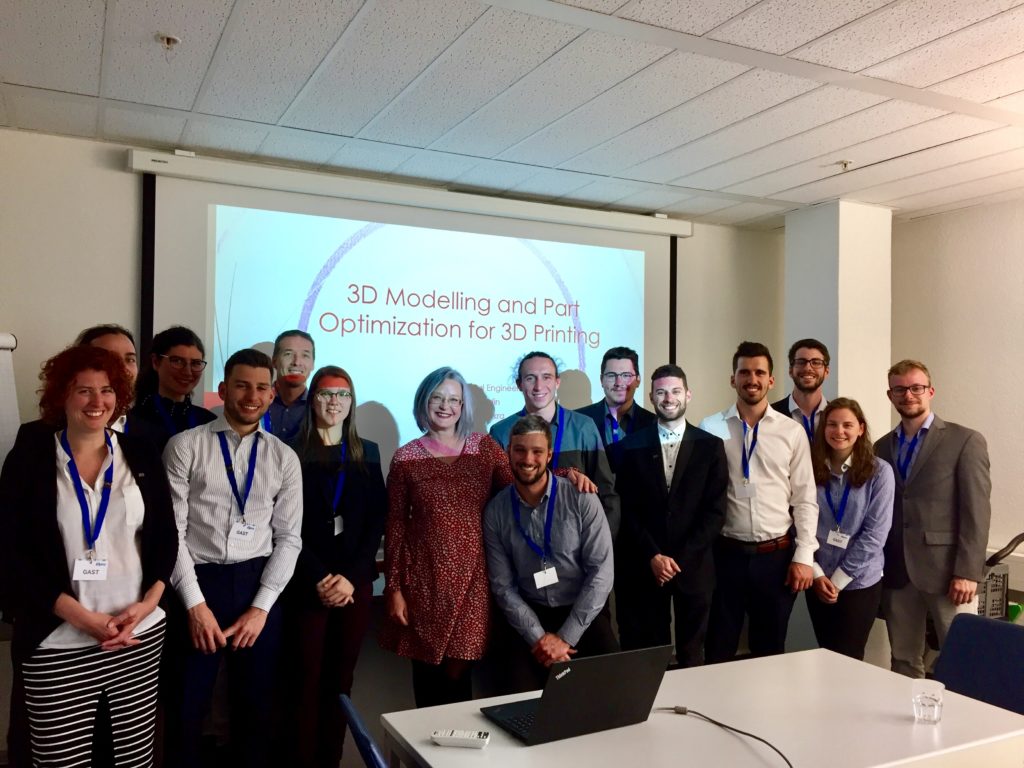This morning, we met with Johanne Roseberry, a canadian that lived in Germany for the last 25 years. She eased our meeting with Enbreeze, a company from the Elpro group where she works.
Enbreeze is a company the design and build smaller wind turbines than those we are used to. Indeed, the radius of the blades is about 5 meters unlike the larger ones, which usually measure between 50 and 100 meters. Their small size offer several advantages such as reduced fabrication costs, noise pollution, as well as greater flexibility for their installation.

Two Enbreeze employees, Sudheesh Sureshkumar and Immanuel Dorn, presented the goal of these turbines, which is to mainly supply farms with energy, but also medium-sized companies and public facilities in order to reduce their dependence to the grid, but also for research and educational purposes.
An interesting fact about these wind turbines is that, considering their smaller height, they can be tilted horizontally thanks to a hydraulic system. Their maintenance is greatly facilitated because of it.
Despite the high costs required to install wind turbines, they have an interesting economic advantage especially for Germany, whose electricity cost is about 3 to 5 times higher than Quebec’s.
After a dinner during which we discussed with Johanne about her experience in Germany, a intern from Elpro, Amit Lakra, presented his thesis on the optimization of 3D printing. He showed us several methods to reduce the weight, and therefore the cost, of 3D prints, including topology. It is a method that uses an algorithm to optimize the construction of 3D objects without compromising the strength of the structure.
